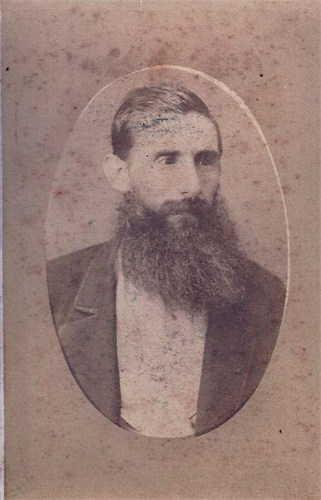“We left him in no man’s land”
“We are lousy, stinking, ragged, unshaven and sleepless. Even when we’re back a bit we can’t sleep for our own guns. I have one puttee, a dead man’s helmet, another dead man’s gas protector, a dead man’s bayonet. My tunic is rotten with other men’s blood, and partly splattered with a comrade’s brains.”
- Lieutenant John ‘Alec’ Raws, Pozieres 1916.
The fighting which took place around the French village of Pozieres in 1916 was among the most devastating action seen by Australian troops during the First World War. Over the course of several attacks made against German positions between July and August 1916, more than 23,000 Australian casualties were sustained. The name ‘Pozieres’ has become synonymous with Australian sacrifice. It was here over 104 years ago that 23-year-old Private John ‘Jack’ Adams was killed in action on the 25th of July 1916.
Jack was a farmhand and labourer from Tumbarumba in New South Wales. He enlisted in the Australian Imperial Force on the 25th of July 1915, along with his older brother, George. The brothers were assigned to the 20th battalion and embarked from Sydney in November 1915 on board HMAT Euripides. After a short stop in Egypt, the Adams brothers reached the front lines in France in March 1916. The pair took part in their first major battle at Pozieres, in the Somme Region of Northern France. The enemy held the strategic high ground surrounding the village, allowing them to launch devastating attacks on allied troops. The weight of artillery fire concentrated on the Pozieres section alone flattened entire villages and churned the surrounding countryside into mud.
Jack Adams was assigned as a bomber in D company and met his fate as his company was undertaking a raid on German lines. During the advance across no man’s land, Jack suffered a minor head wound but refused to withdraw. Just a short time later, in the vicinity of the old German lines, he was severely wounded. His comrades moved him to the relative safety of a shell hole, intending to return to Jack after the raid. The following morning, as the dead and wounded were being retrieved, Jack could not be found.
Devastation at the Old German Line 1 (OG1) near where Private John Adams was killed.
Over several months, his father William received several contradicting messages from Base Records and the Red Cross. Some information suggesting he was simply wounded, others that he had been evacuated to a Casualty Clearing Station and one stating he had been with his unit in August of 1916, months after the raid in which he was wounded. In pleading with the authorities for information about his son’s fate, and that of his brother George, William Adams simply stated: “any information of my boys will be gratefully received.”

William Adams. Photo Courtesy: Meghan Adams
A court of enquiry later determined that Jack had been killed in action between the 25th and 26th of July 1916. Red Cross testimonies from the young private’s comrades detailed his final moments: “He was shot through the liver by a machine gun bullet. We left him in no man’s land as nothing could be done for him”. He was just 23 years old.
On the same day that Jack was killed in action, his brother George led a bombing party further up the line. With disregard for his own safety, George Adams reorganised a chain of supply and threw bombs at enemy lines for over two hours. For his actions at Pozieres that day, he was subsequently awarded the Military Medal.
Jack’s final resting place was never located. His brother George survived the war and returned to Australia in December 1918. Their father William passed away in 1922, and Jacks name was added to his headstone; a permanent memorial to ‘his boy’ who never came home.

Last Post Ceremony for Private John Adams. Photo Courtesy: Meghan Adams


